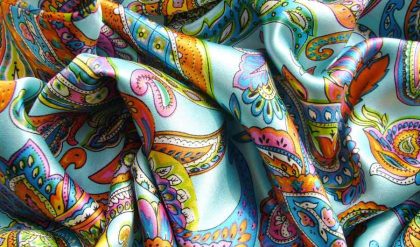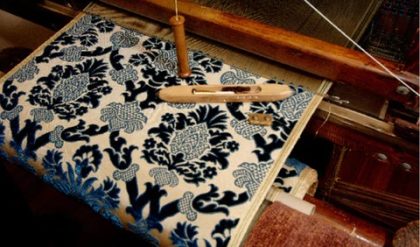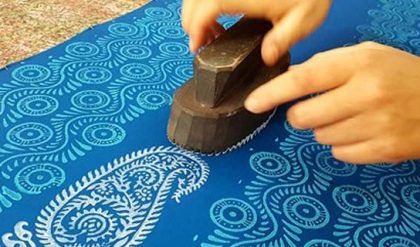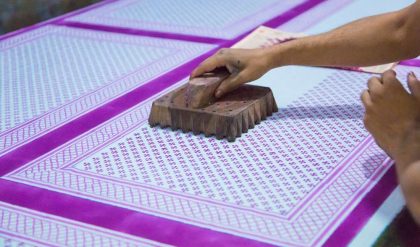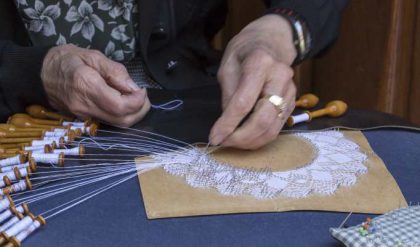Naturally, the woven structure of jacquard fabric is the foundation for colour mixture theory since the colour mixing of jacquard fabric is based on a woven structure interlaced with warp and weft threads. For jacquard fabric, there are three types of compound structures: the juxtaposition and non-backed effect (Fig. 5.1 (a)), juxtaposition and partial backed effect (Fig. 5.1 (b) and (c)), and juxtaposition and backed effect (Fig. 5.1 (d)). In general, the fabric structure of jacquard fabric designed by the traditional plane design mode is of either backed or partial backed effect. The entire compound structures, such as weft-backed, warp-backed and double-layer structures, should be produced on the basis of a backed or partial backed structure. When designing fabric structures with a non-backed effect under the traditional plane design mode, the change rules of woven threads in the compound structure will be beyond control. Such compound fabric structures cannot be drawn on point paper manually

fabric structures under the digital layered-combination design mode, with the application of a full-colour compound structure, the resulting compound fabric structure shows a non-backed effect, enabling jacquard fabrics to express full-colour effects with the change of fl oating length of juxtaposed threads.
By nature, the layered-combination design mode for digital jacquard fabric is devised around the juxtaposition of coloured threads. The colour mixing of digital jacquard fabric is based on a full-colour compound structure in which the fl oats of colour threads arranged in juxtaposition can vary freely, whilst the non-backed structure effect remains unchanged. Figure 5.2 shows the basic principle of colour mixing and colour changing in a fullcolour compound structure. The colouring model consists of four wefts and one warp that meet the technical requirements of structure digitisation for jacquard fabric design.
The gamut weaves used for each thread in the compound structure can be easily established. Taking the brightness of a digital grey image as the standard, the replacement of the greyscales of the digital image and the gamut weaves can be processed effi ciently. Combining several monochromatic single-layer structures can produce a colourful fabric with a compound structure. Since the colour mixing of digital jacquard fabrics regularly features a full-colour effect, it can be viewed as an artwork in which the artifact is made through the digitisation of a woven structure. The mixed colour effect of digital jacquard fabric, with its interlacing of warp and weft threads, cannot be substituted by any other artistic means.
